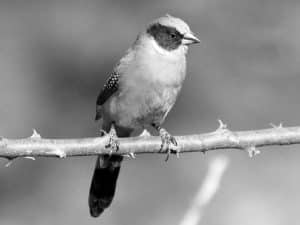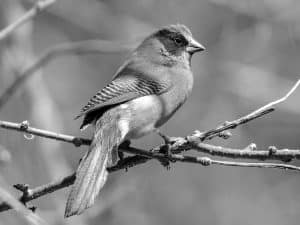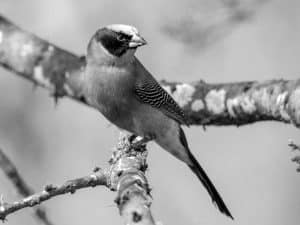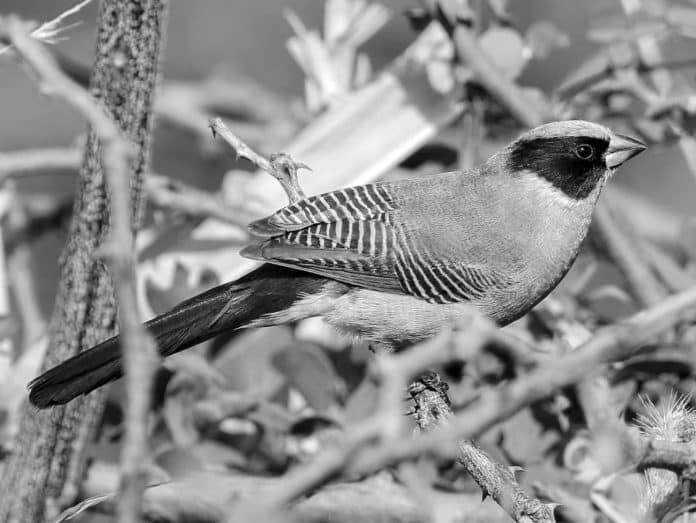Introduction to the Black-Cheeked Waxbill
The black-cheeked waxbill is a vibrant and captivating bird species that can be found in the lush landscapes of Tanzania. This small, finch-like bird is renowned for its striking plumage and unique behaviors, making it a true delight for birdwatchers and nature enthusiasts alike. As you delve into the world of the black-cheeked waxbill in Tanzania, you’ll be enchanted by its beauty, adaptability, and the crucial role it plays in the intricate tapestry of Tanzania’s rich avian diversity.
Habitat and Distribution of the Black-Cheeked Waxbill in Tanzania

The black-cheeked waxbill is primarily found in the central and southern regions of Tanzania, where it thrives in a variety of habitats. These birds prefer open woodlands, savannas, and areas with a mix of grasslands and scattered shrubs or trees. They are particularly abundant in the Serengeti National Park, Tarangire National Park, and the Selous Game Reserve, where their vibrant plumage adds a delightful touch to the stunning landscapes.
Physical Characteristics and Behavior of the Black-Cheeked Waxbill
The black-cheeked waxbill is a small bird, typically measuring around 10-11 centimeters in length. Its most distinctive feature is the bold black patch on its cheeks, which contrasts beautifully with its overall reddish-brown plumage. The bird’s wings and tail are also tipped with black, adding to its striking appearance. These waxbills are known for their lively and social behavior, often seen foraging in small flocks and engaging in energetic displays and vocalizations.
| Characteristic | Description |
|---|---|
| Size | 10-11 cm in length |
| Plumage | Reddish-brown with a bold black patch on the cheeks |
| Behavior | Lively, social, and often seen in small flocks |
Breeding and Reproduction of the Black-Cheeked Waxbill
The breeding season for the black-cheeked waxbill in Tanzania typically coincides with the onset of the rainy season, usually between November and April. During this time, the birds engage in elaborate courtship rituals, including singing, displaying, and nest-building. The female waxbill constructs a domed nest, often using a variety of materials such as grass, leaves, and feathers. She lays a clutch of 3-5 eggs, which both the male and female take turns incubating for around 12-14 days. Once the chicks hatch, both parents work tirelessly to feed and care for their offspring until they fledge and become independent.
- Breeding Season: November to April
- Nest Construction: Domed nest using grass, leaves, and feathers
- Clutch Size: 3-5 eggs
- Incubation Period: 12-14 days
- Parental Care: Both parents care for the chicks until they fledge
Threats and Conservation Status of the Black-Cheeked Waxbill

The black-cheeked waxbill is currently classified as a species of Least Concern by the International Union for Conservation of Nature (IUCN). However, like many other bird species, it faces various threats to its survival. Habitat loss due to deforestation, agricultural expansion, and urbanization are the primary concerns for the black-cheeked waxbill in Tanzania. Additionally, the illegal pet trade and the use of pesticides can also have a negative impact on the species’ population. Conservation efforts, including habitat preservation, environmental education, and sustainable land management practices, are crucial to ensuring the long-term survival of the black-cheeked waxbill in Tanzania.
Observing the Black-Cheeked Waxbill in the Wild: Best Locations in Tanzania
If you’re eager to catch a glimpse of the captivating black-cheeked waxbill during your travels in Tanzania, there are several prime locations where you can increase your chances of spotting these birds. The Serengeti National Park, Tarangire National Park, and the Selous Game Reserve are renowned hotspots for birdwatching, and the black-cheeked waxbill is a common sight in these areas. Additionally, the Udzungwa Mountains National Park and the Kilombero Valley are also excellent destinations to observe these vibrant birds in their natural habitat.
Tips for Birdwatching and Photographing the Black-Cheeked Waxbill
Birdwatching and photographing the black-cheeked waxbill can be a thrilling and rewarding experience. To increase your chances of a successful sighting and capture, consider the following tips:
- Invest in a quality pair of binoculars or a camera with a powerful telephoto lens to get a closer view of the birds.
- Familiarize yourself with the black-cheeked waxbill’s distinctive features and calls to aid in identification.
- Move slowly and quietly, as these birds are often skittish and may flee at the slightest disturbance.
- Observe the birds from a distance and avoid approaching them too closely, as this can disrupt their natural behavior.
- Be patient and persistent, as the black-cheeked waxbill may be elusive at times, and it may take some time to spot them.
Joining Tanzania Birding Tours: A Chance to Spot the Black-Cheeked Waxbill

If you’re eager to maximize your chances of seeing the black-cheeked waxbill and other fascinating bird species in Tanzania, joining a guided birding tour can be an excellent option. These specialized tours are led by experienced naturalists and birdwatching experts who know the best locations and techniques to spot the target species. By joining a Tanzania birding tour, you’ll not only have the opportunity to observe the black-cheeked waxbill in its natural habitat, but you’ll also gain valuable insights into the country’s rich avian diversity and the conservation efforts surrounding these remarkable birds.
Research and Conservation Efforts for the Black-Cheeked Waxbill in Tanzania
The black-cheeked waxbill is an integral part of Tanzania’s vibrant avian ecosystem, and ongoing research and conservation efforts are crucial to ensuring its long-term survival. Scientists and ornithologists in Tanzania are actively studying the species’ population trends, habitat preferences, and breeding behavior to better understand the factors that influence its well-being. Conservation initiatives, such as habitat restoration, community-based wildlife management, and environmental education programs, are also being implemented to protect the black-cheeked waxbill and its fragile ecosystems.
Conclusion: Appreciating the Beauty and Importance of the Black-Cheeked Waxbill
The black-cheeked waxbill is a true gem of Tanzania’s avian diversity, captivating all who have the privilege of witnessing its enchanting presence. As you explore the stunning landscapes of this East African nation, keep your eyes peeled for the vibrant flashes of this remarkable bird. By appreciating the beauty and importance of the black-cheeked waxbill, you can play a vital role in its conservation and help ensure that future generations can continue to marvel at the wonders of this remarkable species. Embark on your own journey of discovery and let the black-cheeked waxbill inspire your love and respect for the natural world.

































